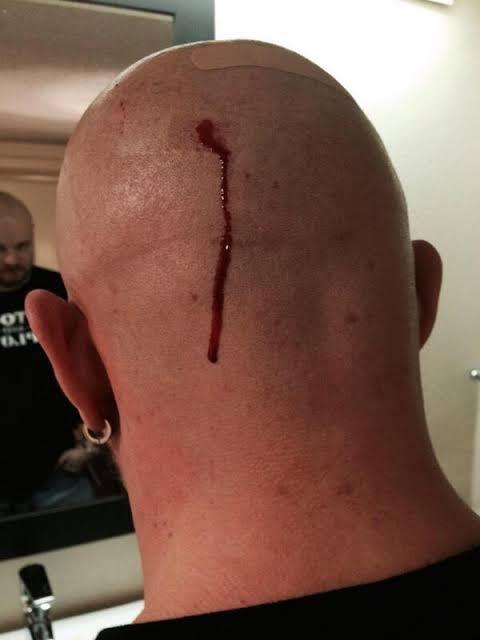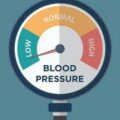Each year, about 60,000 Americans die from hemorrhaging, or blood loss, a 2018 review estimates. Worldwide, that number is almost 2 million. As many as 1.5 million of these deaths are the result of physical trauma.
Bleeding is the loss of blood from the circulatory system. Causes can range from small cuts and abrasions to deep cuts and amputations. Injuries to the body can also result in internal bleeding, which can range from minor (seen as superficial bruising) to massive bleeds.
A person can bleed to death in 5 minutes. Bystanders may be able to save a life before emergency personnel can arrive. There is a national campaign called Stop the Bleed to teach anyone how to stop bleeding. People in mass casualty events have died from blood loss even when their wounds shouldn’t have been fatal.
First aid for severe external or internal bleeding is critical in order to limit the loss of blood until emergency medical aid arrives. First aid actions to manage external bleeding include applying direct pressure to the wound, maintaining the pressure using pads and bandages, and, raising the injured limb above the level of the heart if possible.
Minor bleeding
Small cuts and abrasions that are not bleeding excessively can be managed at home. First aid suggestions include:
- Clean the injured area with sterile gauze soaked in normal saline or clean water. Do not use cotton wool or any material that will fray or leave fluff in the wound.
- Apply an appropriate dressing such as a band aid or a non-adhesive dressing held in place with a hypoallergenic tape. This dressing must be changed regularly.
- See your doctor if you can’t remove the dirt yourself. A dirty wound carries a high risk of infection.
- If you have not had a booster vaccine against tetanus in the last five years, see your doctor.
Nosebleeds
Bleeding from the nose is usually not severe. First aid suggestions include:
- Sit the person upright and ask them to tilt their head forward.
- Using the thumb and forefinger, squeeze their nostrils shut.
- Hold for at least 10 minutes.
- Release the hold gently and check for bleeding. If the bleeding has stopped, advise them to avoid blowing their nose or picking at it for the rest of the day.
- If the bleeding continues beyond 20 minutes, seek medical aid.
- If the nose bleed occurs again, seek medical aid.
Severe external bleeding
Even a small injury can result in severe external bleeding, depending on where it is on the body. This can lead to shock. In medical terms, shock means the injured person no longer has enough blood circulating around their body. Shock is a life-threatening medical emergency.
First aid management for severe external bleeding includes:
- Check for danger before approaching the injured person. Put on a pair of gloves, nitrile ones, if available.
- If possible, send someone else to call triple zero (000) for an ambulance.
- Lie the person down. If a limb is injured, raise the injured area above the level of the person’s heart (if possible).
- Get the person to apply direct pressure to the wound with their hand or hands to stem the blood flow. If the person can’t do it, apply direct pressure yourself.
- You may need to pull the edges of the wound together before applying a dressing or pad. Secure it firmly with a bandage.
- If an object is embedded in the wound, do not remove it. Apply pressure around the object.
- Do not apply a tourniquet.
- If blood saturates the initial dressing, do not remove it. Add fresh padding over the top and secure with a bandage.
Internal bleeding – visible
The most common type of visible internal bleed is a bruise, when blood from damaged blood vessels leaks into the surrounding skin. Some types of internal injury can cause visible bleeding from an orifice (body opening). For example:
- bowel injury – bleeding from the anus
- head injury – bleeding from the ears or nose
- lung injury – coughing up frothy, bloodied sputum (spit)
- urinary tract injury – blood in the urine.
Internal bleeding – not visible
It is important to remember that an injured person may be bleeding internally even if you can’t see any blood. An internal injury can sometimes cause bleeding that remains contained within the body; for example, within the skull or abdominal cavity.
Listen carefully to what the person tells you about their injury – where they felt the impact, for example. They may display the signs and symptoms of shock. In the case of a head injury, they may display the signs and symptoms of concussion. Therefore, it is important to ask the right questions to collect the relevant information.
Symptoms of concealed internal bleeding
The signs and symptoms that suggest concealed internal bleeding depend on where the bleeding is inside the body, but may include:
- pain at the injured site
- swollen, tight abdomen
- nausea and vomiting
- pale, clammy, sweaty skin
- breathlessness
- extreme thirst
- unconsciousness.
Some signs and symptoms specific to concussion (caused by trauma to the head) include:
- headache or dizziness
- loss of memory, particularly of the event
- confusion
- altered state of consciousness
- wounds on the head (face and scalp)
- nausea and vomiting.
Internal bleeding is a medical emergency
First aid cannot manage or treat any kind of internal bleeding. Prompt medical help is vital. Suggestions include:
- Check for danger before approaching the person.
- If possible, send someone else to call triple zero (000) for an ambulance.
- Check that the person is conscious.
- Lie the person down.
- Cover them with a blanket or something to keep them warm.
- If possible, raise the person’s legs above the level of their heart.
- Don’t give the person anything to eat or drink.
- Offer reassurance. Manage any other injuries, if possible.
- If the person becomes unconscious, place them on their side. Check breathing frequently. Begin cardiopulmonary resuscitation (CPR) if necessary.





